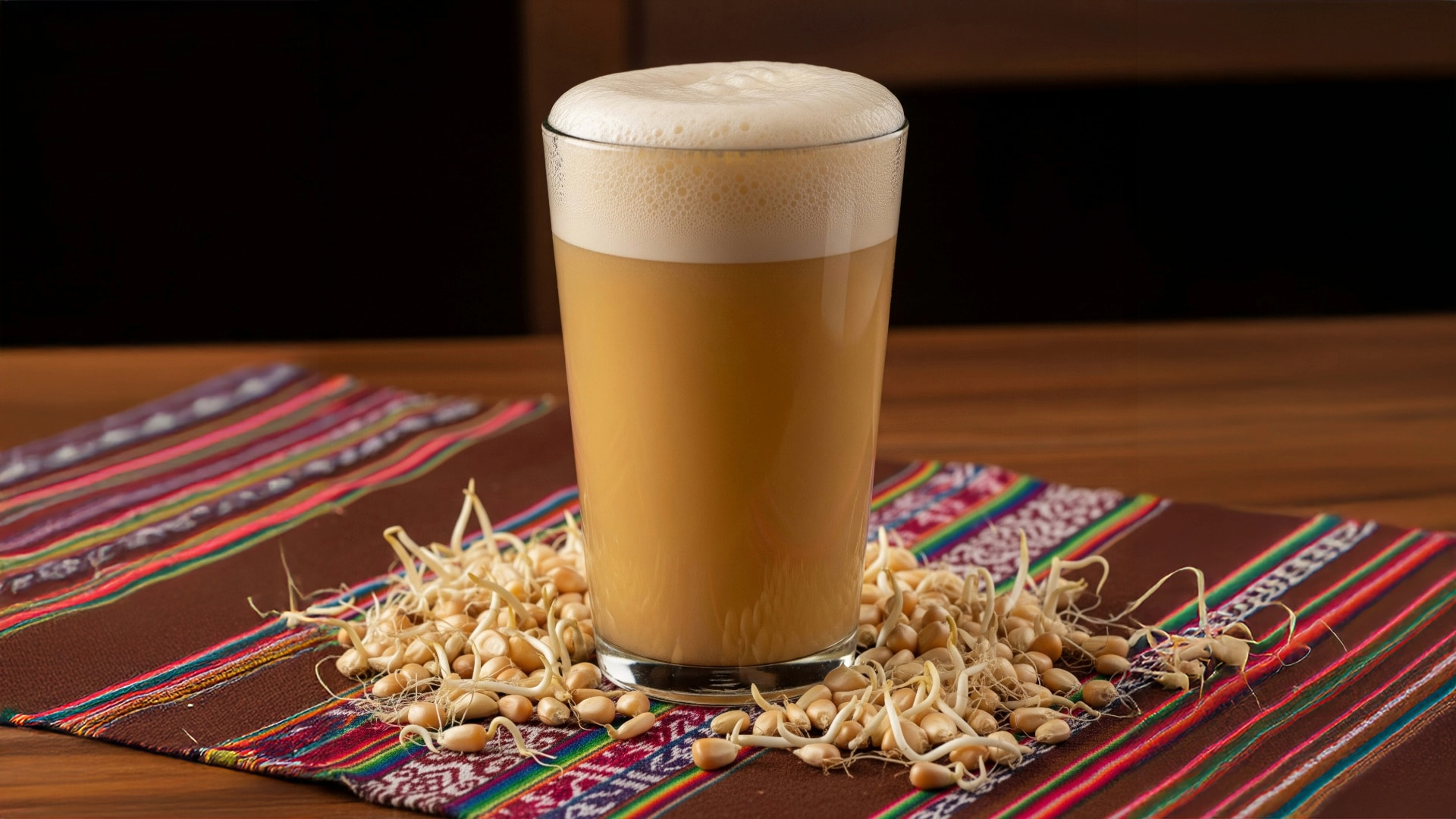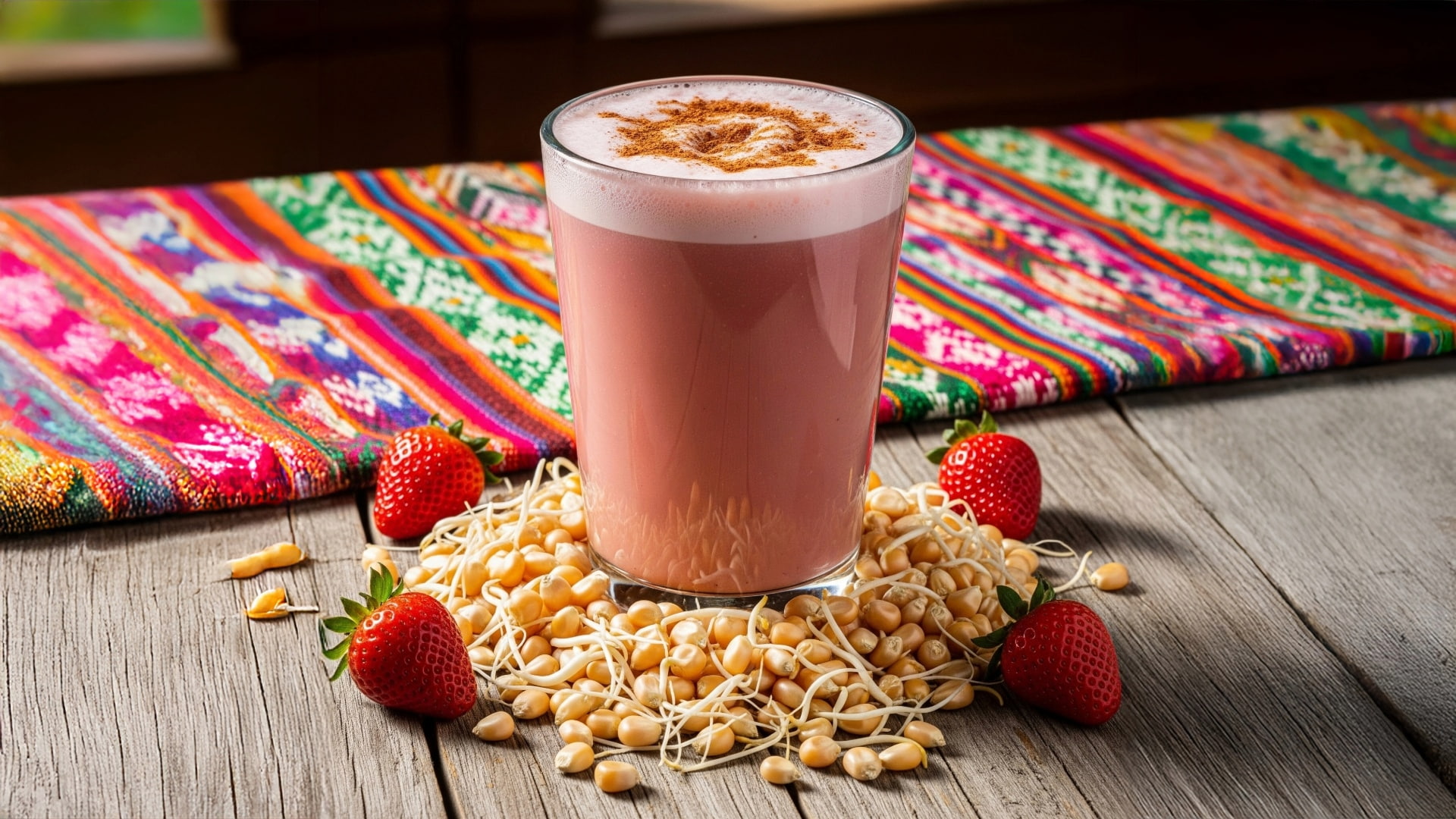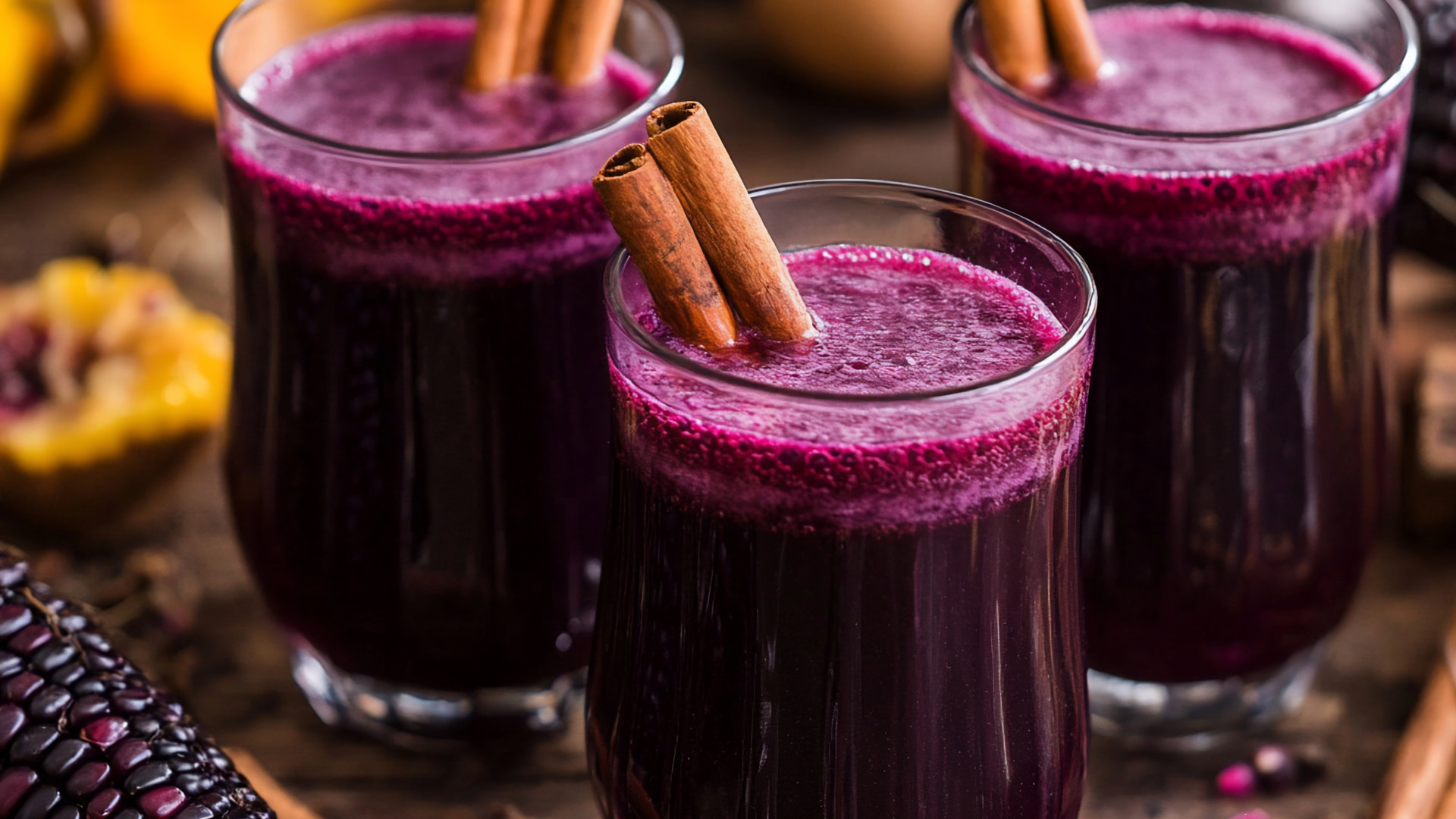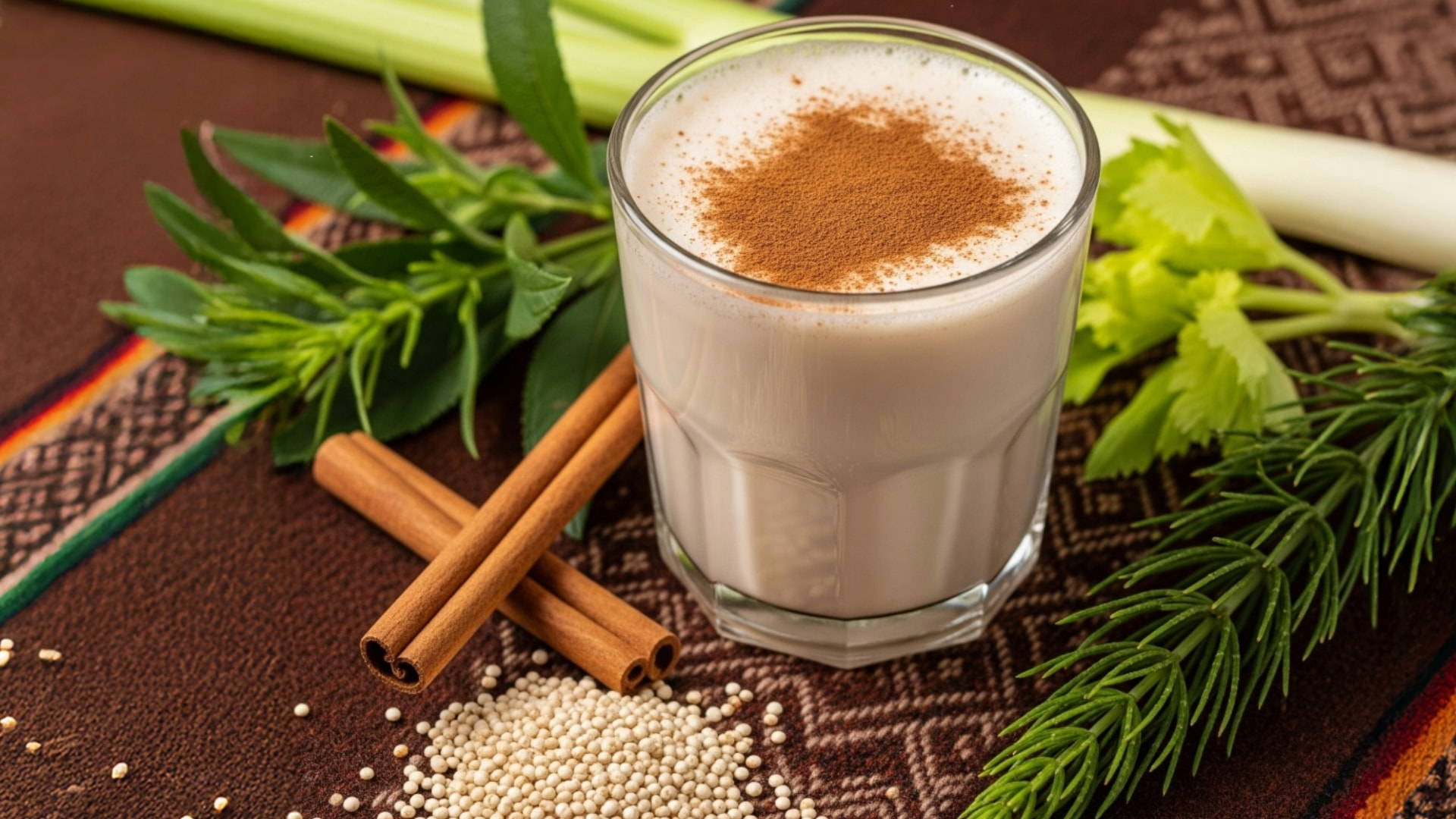Where history is sipped with every taste
In the highlands of Cusco, Andean drinks are liquid chronicles preserving centuries of cultural resilience. Chicha de jora, the heart of Inca tradition, leads this heritage, joined by adaptations like frutillada, coca leaf tea, purple corn chicha, and nutritious quinoa chicha. Each holds historical truths that challenge simplistic folklore.
Chicha de Jora: A Sacred Pact
This fermented corn brew was born from a 15th-century climate accident: rains flooded Inca Túpac Yupanqui’s grain stores, causing corn to sprout (“jora”) and ferment into an intoxicating drink. The Incas elevated it to ceremonial status, during Inti Raymi, emperors offered the first sip to the sun in gold cups, while farmers poured it for Pachamama (Mother Earth) in land blessings.
Today, its artisanal prep varies:
- In Pisac: Shorter fermentation = tangy flavor, perfect with roasted guinea pig.
- In Chinchero: Muña herb added during boiling = refreshing mint notes.
- In Ollantaytambo: Corn sprouted in stone pools = deep earthy taste.
Spot authentic chicherías by their red flag at the entrance!

Fusion Andean Drinks: The Frutillada
This sweet variant emerged after European strawberries arrived in the 1700s. Not pre-Hispanic, but a cultural blend: chicha de jora mixed with Andean strawberry pulp and cane sugar, then re-fermented. Its festive character made it iconic at Sacred Valley patron-saint festivals, where it’s still poured from giant clay jugs in towns like Calca.

Coca Leaf Tea: Altitude Resistance
Far from a “tourist infusion,” this is among the most ancient Andean drinks. Inca messengers (chasquis) chewed coca leaves to endure mountain treks. Modern studies confirm its alkaloids boost blood oxygenation, fighting altitude sickness. In Cusco’s San Pedro Market, vendors serve it steaming hot, sometimes blended with muña herb.

Purple Corn Chicha: Timeless Hue
Though modern versions use Spanish-introduced fruits (pineapple, quince), its soul is kulli sara, purple corn cultivated since Peru’s Moche era (500 AD). Ancient ceramics in Lima museums depict these ears, proving its deep roots. Today, this non-alcoholic staple simmers in Arequipa’s picanterías and chills in Cusco street stalls, sweetened with sugarcane honey.

Nourishing Andean Drinks: Quinoa Chicha
Unlike some Andean drinks, this was never ceremonial. Research confirms it was daily sustenance in highland communities near Puno. Made by boiling quinoa to release starches, then mixing with aguaymanto or tumbo fruit juice. The FAO praises its high protein/amino acid content. Now, experiential tourism projects in Chinchero serve it to recharge travelers after hikes.

Why Andean Drinks Are Living History
These Andean drinks are living acts of cultural memory. Chicha de jora preserves ancient techniques; coca tea upholds ancestral wisdom; purple corn and quinoa chichas reinvent native ingredients. In places like San Pedro Market or rural chicherías, this legacy thrives authentically, far from folkloric clichés. To taste them is to converse with the Andes’ living history.
Live the Flavors of the Andes
Don’t just read about history, taste it! Explore Cusco City Tour at San Pedro Market, savor traditional brews in Pisac, Chinchero, and Ollantaytambo on the Sacred Valley to Machu Picchu, and uncover ancient agricultural wisdom on the Maras – Moray Tour. Let every sip of chicha de jora, coca tea, purple corn, and quinoa chicha transport you through centuries of Inca heritage. Book your Andean drinks journey now and taste history firsthand!
